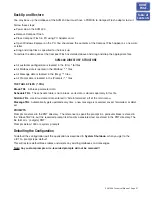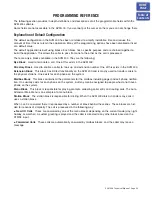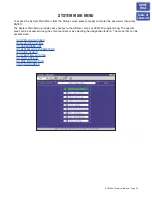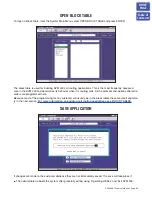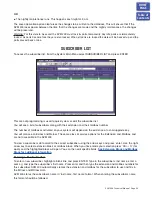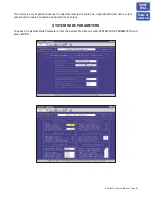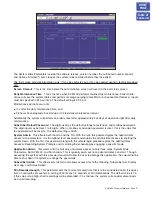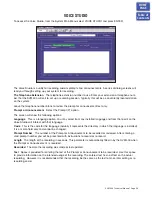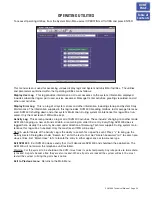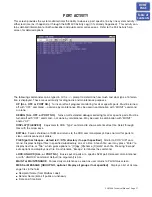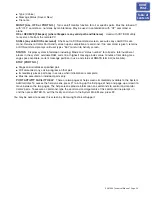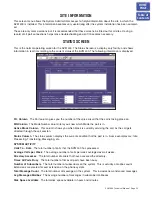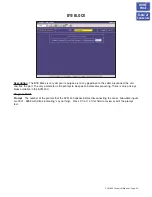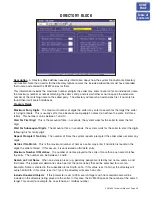
Block Tables
Block tables are the building blocks for your individual customer application, all call flow is programmed using
these blocks. Each block type has a specific function, and can be chained together with other blocks to provide
a complete call processing solution.
There are only 6 blocks available in the SVM 400, they are:
BYE BLOCK
Speaks a prompt, usually “Good bye”, then terminates
the call session.
DIRECTORY BLOCK
This is a utility that sets up the necessary parameters
used in the subscriber’s directory list.
EXTENSION BLOCK
Represents the subscriber to a caller. Houses sub-
scriber’s settings.
MAILBOX BLOCK
Receives, records, sends, and stores messages. Contains
default personal greeting, name and password for the
subscriber.
MENU BLOCK
Speaks prompts to caller and routes on Input from
caller entry.
STATION BLOCK
All devices that access an external service, (other sta-
tion, CO, pager, etc.), require at least one of these.
Each contains the call progress information and instruc-
tions to place a call.
EXPLANATION OF DEFAULT CONFIGURATION
The default configuration in the SVM 400 has been simplified to minimize installation time and reduce the
amount of time it takes to learn the application. Many of the programming options have been disabled or fixed
at a default value.
The default application is built using Blocks. Each block has a specific purpose and are chained together to
build the application. This allows the caller to pass from one to the other as the call is processed.
Bye Block
Use to terminate a call. One of these exists in the SVM 400.
Directory Block
Use to enable a caller to ‘look up’ an extension number. One of these exists in the SVM 400.
Extension Block
This block has limited functionality on the SVM 400 and it is mostly used to transfer callers
to the physical stations. One exists for each phone on the system.
Mailbox Block
This block contains all the parameters for the mailbox including pager and cell phone notifica-
tion. One usually exists for each phone on the system, but may also be assigned to people who do not have a
phone on the system.
Menu Block
This block is responsible for playing prompts, collecting caller entry and routing calls. The auto
attendant main menu is an example of a menu block. There is a default Menu Block created for answering calls
in each mode (Day, Night, Holiday, and Weather).
Station Block
The station block is responsible for dialing. When the SVM 400 dials or transfers any call it uses
a station block. Default Station Blocks exist for Internal Calls, External Calls, and Beepers.
When a call is answered there it is processed by a number of blocks behind the scenes. These blocks are hid-
den for reasons of simplicity. The call is processed in the following way:
●
New CO Calls
These are answered by one of the MENU blocks depending on the current mode (day,
night, holiday, or weather). A custom greeting is played and the caller is directed to any other block based on
the DTMF input.
●
Forwarded Calls
These calls are automatically answered by mailbox blocks, and the caller may leave a
message.
SVM 400 Technical Manual Page 34
HOME
PAGE
Table of
Contents


